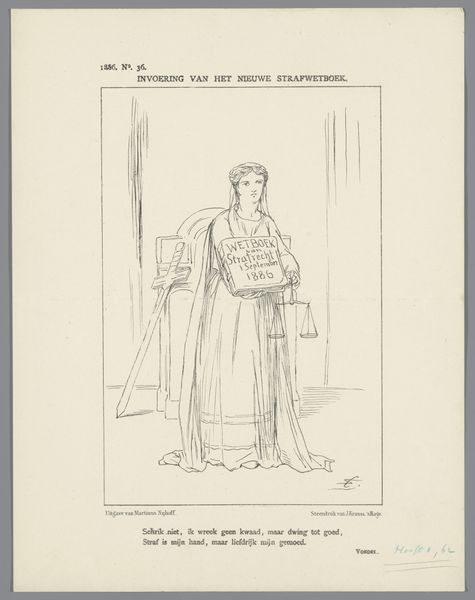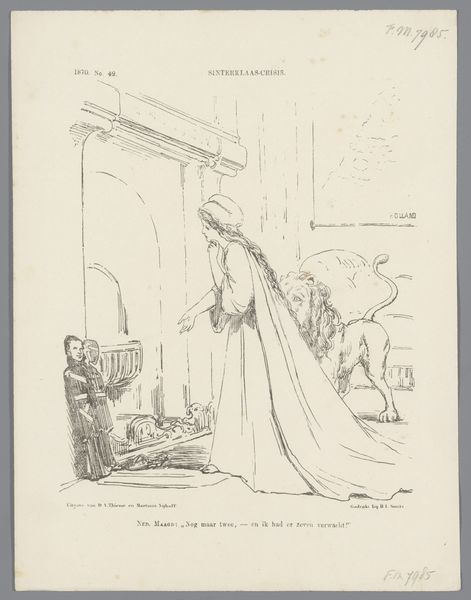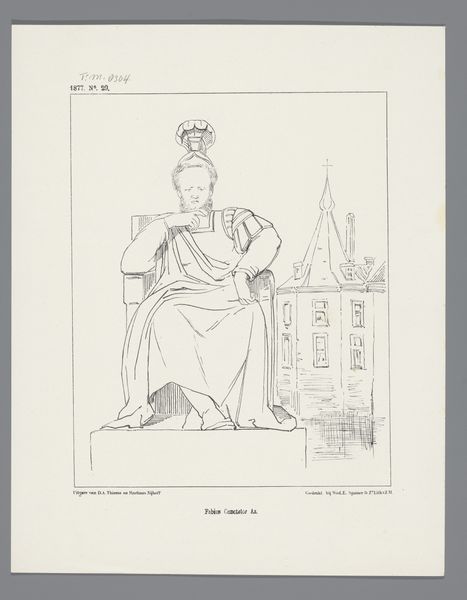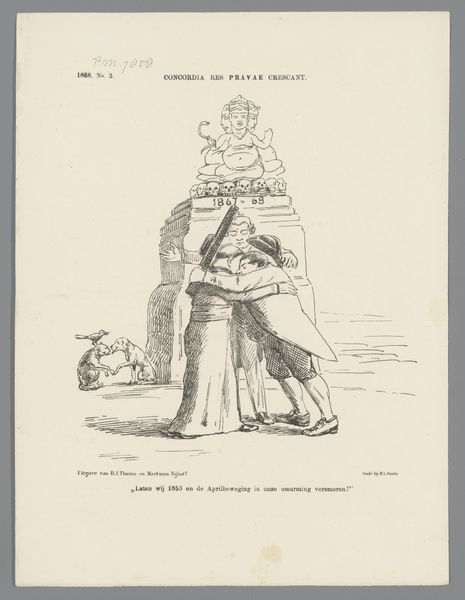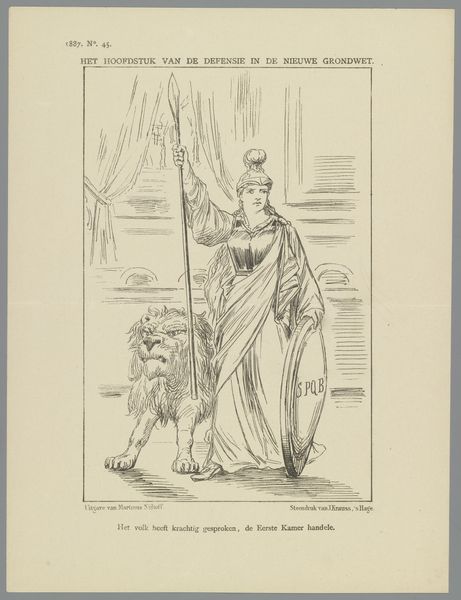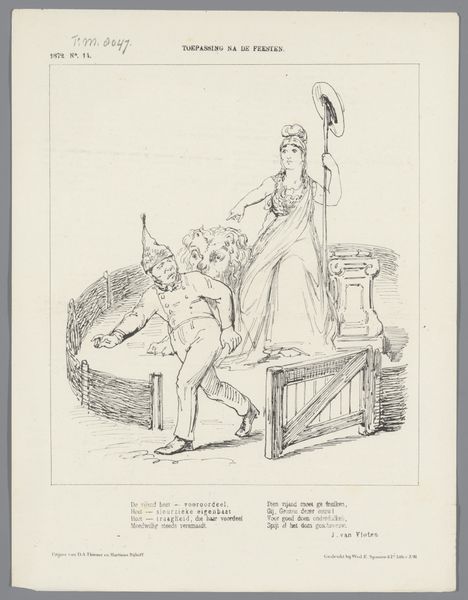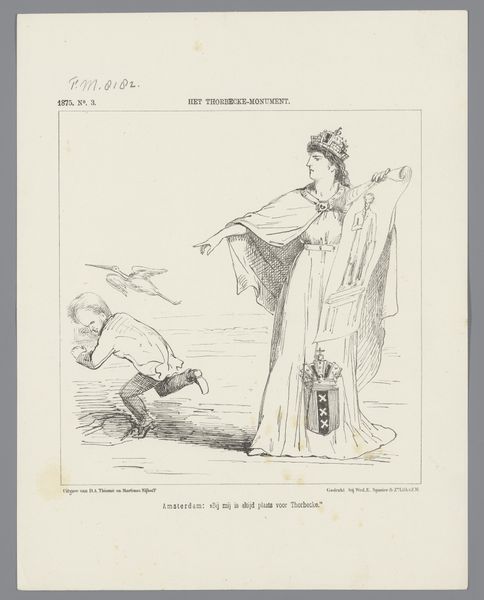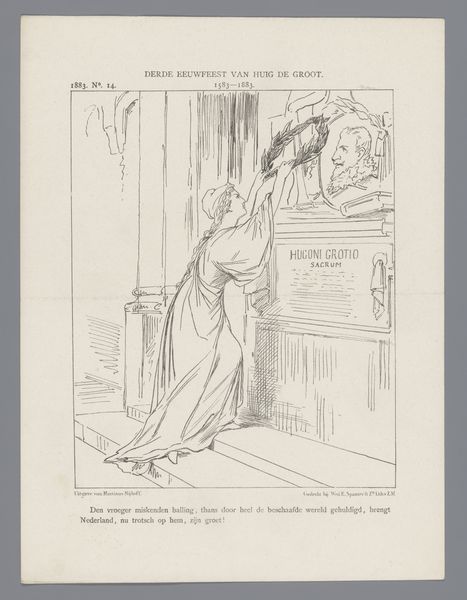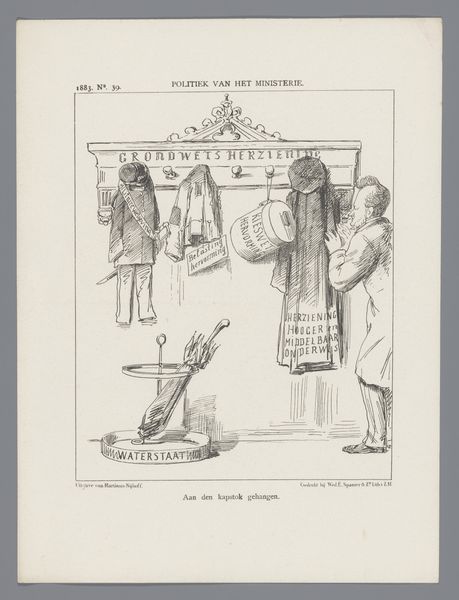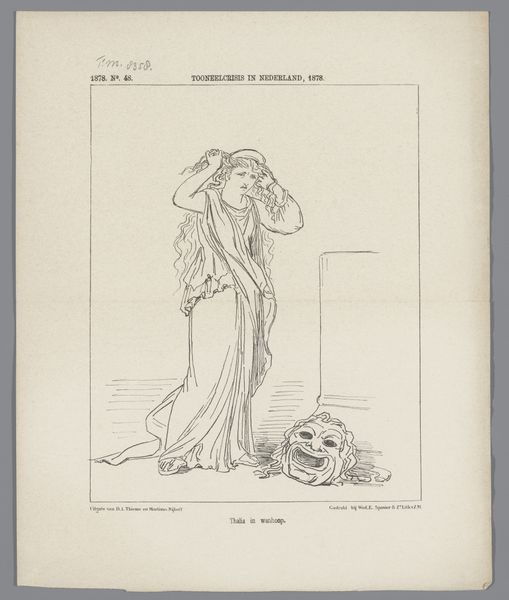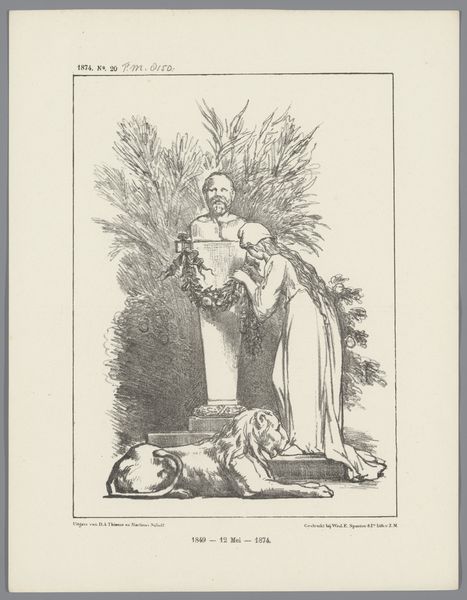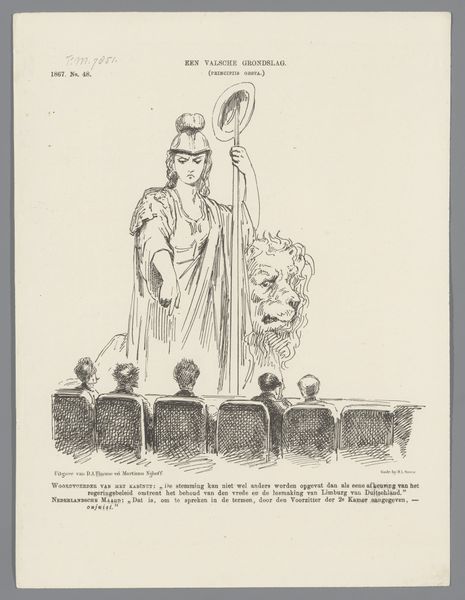
#
historical design
#
aged paper
#
pale palette
#
reduced colour palette
#
retro 'vintage design
#
feminine colour palette
#
personal sketchbook
#
historical fashion
#
storyboard and sketchbook work
#
soft colour palette
Dimensions: height 275 mm, width 215 mm
Copyright: Rijks Museum: Open Domain
Editor: This is "Spotprent met minister Heemskerk als Penelope, 1886," a print from 1886 by Johan Michaël Schmidt Crans. I'm struck by how this image of Penelope unraveling her weaving feels so timeless and subtly subversive. What layers do you see in this piece? Curator: That's a great initial observation! Indeed, it’s much more than just an illustration of a classical myth. Here, Penelope's act of weaving and unraveling becomes a pointed critique of 19th-century Dutch politics, with Minister Heemskerk in the role of Penelope. Consider how the artist appropriates a female figure known for her cunning and uses her to satirize a male political figure. Editor: So it’s about questioning power through gender? Curator: Exactly! By casting Heemskerk as Penelope, the artist is not only lampooning his political strategies – perhaps implying they are intentionally delaying tactics -- but also playing with gendered notions of power and agency. We need to unpack the gender implications within the historical context of late 19th century Netherlands to appreciate the full weight of that imagery. Think about how traditional expectations of women are being flipped and used to comment on a man in power. Editor: It almost seems like the artist is suggesting Heemskerk’s power is as fragile, as easily undone, as Penelope's weaving. Curator: Precisely. And the "Raad van State," or Council of State, depicted at the bottom is the object of her constant adjustments. How might this connect with broader discussions about political efficacy and representation at the time? Was the Council of State under pressure? How does this caricature reflect public sentiment regarding its effectiveness and role in shaping policies? These are the critical inquiries for us to dive into to better understand the artwork's meaning and how it resonated during its period. Editor: I see it so differently now. It’s not just a historical image, it's an early form of political activism, questioning the power structures through a very clever, gendered lens. Curator: And it reminds us how art can serve as a mirror, reflecting and challenging societal norms. By looking at historical art through the lens of contemporary issues, such as gender and political manipulation, it allows us to better understand the continuum of art and society.
Comments
No comments
Be the first to comment and join the conversation on the ultimate creative platform.
